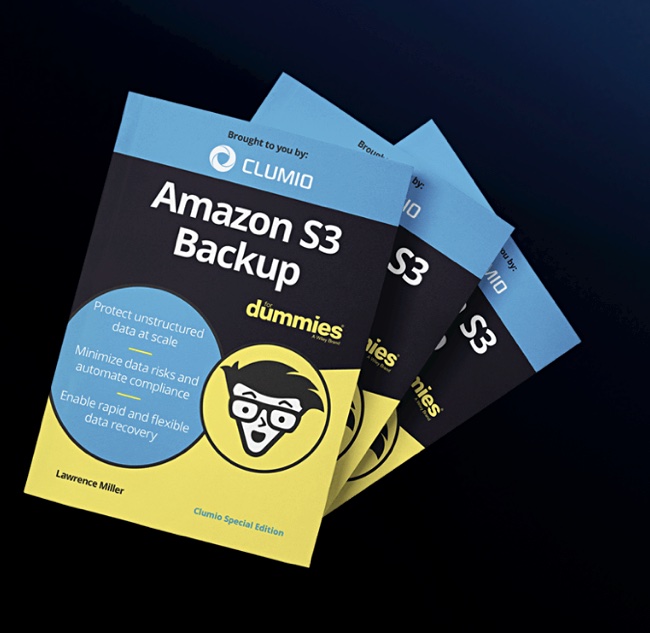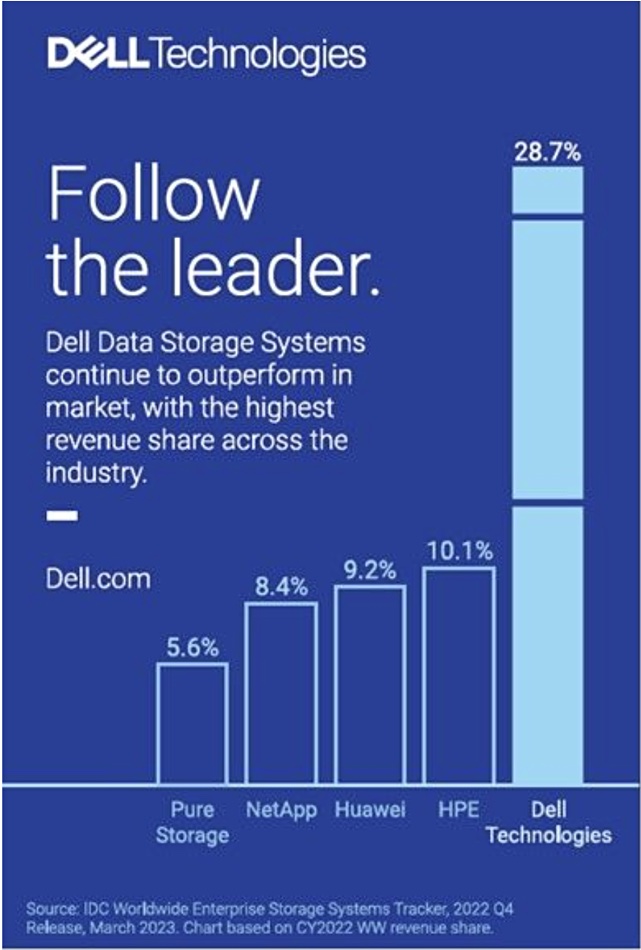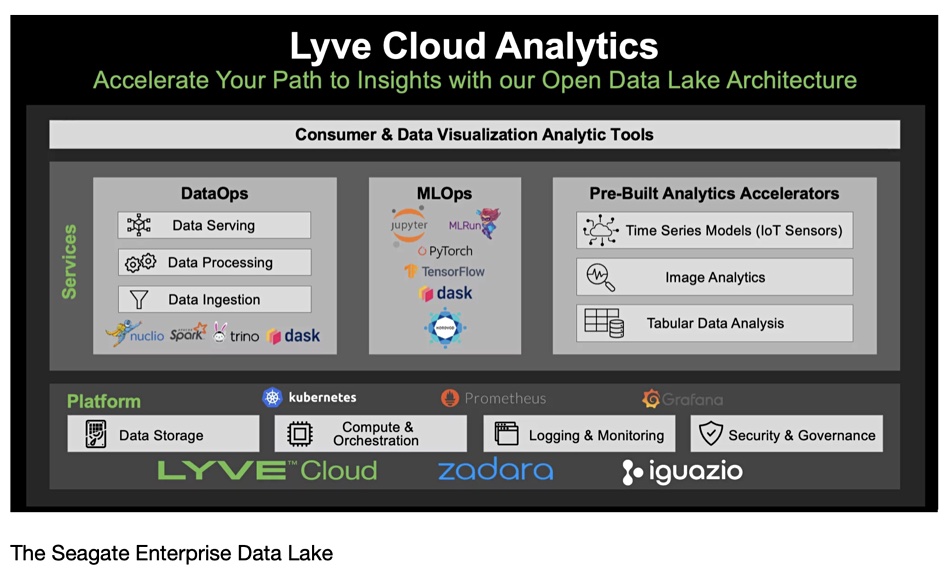ATTO ExpressNVM NVMe Smart Switch Host Adapters and Xinnor Software RAID (xiRAID) are combining to create a RAID system for compute-intensive, high-performance systems. Xinnor xiRAID is a software RAID designed for NVMe performance. ATTO ExpressNVM NVMe Smart Switch Host Adapters add scalability and flexibility to dense NVMe storage ecosystems. The ATTO/Xinnor combo was tested on a Dell PowerEdge server, with 8x NVMe SSDs over PCIe 4 using the ATTO ExpressNVM adapter and sequential I/O was run across the RAID group. When using xiRAID in RAID5 it achieved 27.5GB/sec in reads and 9GB/sec in write.
…
New AWS EC2 P5 instances deployed in EC2 UltraClusters are optimized to harness Nvidia Hopper GPUs for accelerating generative AI training and inference at massive scale. P5 instances feature eight Nvidia H100 GPUs capable of 16 petaFLOPs of mixed-precision performance, 640GB of high-bandwidth memory, and 3,200Gbit/sec networking connectivity (8x more than the previous generation) in a single EC2 instance. They P5 will deliver up to 20 exaFLOPS of performance for building and training the largest deep learning models. They will be the first GPU-based instance to take advantage of AWS’s second-generation Elastic Fabric Adapter (EFA) networking, which provides 3,200Gbit/sec of low-latency, high bandwidth networking throughput, enabling customers to scale up to 20,000 H100 GPUs in EC2 UltraClusters for on-demand access to supercomputer-class performance for AI. P5 instances are expected to lower the cost to train ML models by up to 40 percent over the previous generation.
EFA’s custom-built operating system (OS) bypass hardware interface and integration with Nvidia GPUDirect RDMA enhances the performance of inter-instance communications by lowering latency and increasing bandwidth utilization, which is critical to scaling training of deep learning models across hundreds of P5 nodes. AWS says customers can use the industry’s broadest and deepest portfolio of services such as Amazon S3 for object storage, Amazon FSx for high-performance file systems, and Amazon SageMaker for building, training, and deploying deep learning applications.

…
Clumio has published an S3 Backup for Dummies book. Get it here.
…
Stream processing company Decodable has expanded the enterprise features of its product with a Snowflake Streaming API connector and a dbt adapter. For data engineers, they can ingest realtime data directly from Apache Flink into their Snowflake cloud data warehouse, taking advantage of lower cost and reduced latency, without having to integrate with Snowflake themselves. For analytics engineers, data analysts and data scientists, it is now easier to manage streaming and batch transformation simultaneously in a single workflow with dbt and Decodable. The Decodable Snowflake Snowpipe Streaming API connector enables data scientists to to balance data ingestion latency against the cost of Snowflake warehouse usage.
…
Dell has published a storage vendor market share slide using data from an IDC tracker:

…
Iguazio has published a Seagate case study. The HDD manufacturer provides “Lyve Cloud Analytics,” a platform that combines scalable S3 together with a fully managed data engineering and automation MLOps platform, powered by Iguazio. This is a unified open data lake platform that provides data visualization and analytics. Seagate ingests more than 50–60 percent of the data coming from their factories as well as data that arrives from their customers and suppliers, into this enterprise data lake.

The data lake is used by various organizations across Seagate to help improve product quality, gain business insights, etc. An example given that uses Iguazio’s AI and MLOps capabilities to improve product efficiency and quality is wafer manufacturing. When it needs to run upgrades, Seagate has a pipeline based on Iguazio that upgrades the platform in a seamless way. More information here.
…
Intel has published a customer case study featuring German cloud service provider Finanz Informatik Technologie Service (FI-TS), which uses Lightbits NVMe TCP storage. The FI-TS DevOps team was engineering the company’s Kubernetes-based Finance Cloud Native production interface to deliver cloud-native services built on an internally engineered NVM Express (NVMe)-based infrastructure, using direct-attached NVMe storage. FI-TS turned to Lightbits Labs, an Intel partner. With an optimized NVMe/TCP front end and an intelligent back-end flash management, LightOS delivers input/output operations per second (IOPS). That, from an application’s perspective, is indistinguishable from direct-attached NVMe solid state drives (SSDs).

Ultimately, FI-TS was able to improve resource utilization, drive better performance, scale data more efficiently, and reduce its TCO through its collaboration with Lightbits and Intel. Even better, FI-TS was able to offer a highly differentiated service that met its customers’ most critical needs.
…
Kioxia has announced its XL-FLash storage class memory NAND chips will start sample shipping in November and be in production by the end of the year. This uses gen 2 FL flash, with a mix of SLC and MLC (2bits/cell) NAND, and is claimed to have 26 times the performance of the 2016 HK6 SATA SSD. Kioxia didn’t provide any IOPS or bandwidth details. The HK6-DC provided 85,000 random read IOPS and 550MBps sequential read bandwidth. The result of a 26x increase of these numbers is 2.21 million random read IOPS and 14.3GB/sec sequential read. The HK6’s typical read/write latency was 140/60μs. We doubt the XL-Flash latency has decreased 26x though.
……
Lenovo says harnessing data effectively is a key attribute of the world’s leading companies, giving them a competitive advantage through the ability to quickly gain insights and advance innovation. A commissioned Data for Humanity report found that only a minority (11 percent) of UK organizations currently meet the criteria to be considered a so-called Data Leader. The Data Leaders, according to the report at least, are an elite group that have enacted successful strategies across three key pillars of Data Management, Data Analytics and Data Security, enabling them to use data more effectively across business functions. The report says 78 percent of them have successfully increased revenue in the past 12 months, while 70 percent have improved customer satisfaction. The Data Leaders are also far less likely to have experienced the effects of poor employee productivity, is the claim (13 percent) and only 10 percent of this group reportedly experienced reduced innovation.
…
Database supplier MariaDB announced a reduction in its global workforce by approximately 8 percent at the beginning of February in response to cost reduction goals and to focus the company on key initiatives and priorities.
…
Big Memory software supplier MemVerge is attending MemCon and demonstrating a server running an online transaction processing (OLTP) benchmark, with Memory Machine software and E3.S CXL memory expansion from Micron. Adding CXL memory boosted transactions per second by 15 percent, with the addition of Memory Machine software boosting performance another 12 percent. This highlights the potential to close the “memory wall” gap between CPU and memory performance by supplementing DIMM DRAM bandwidth and capacity with CXL expansion memory.
…
Nasuni is announcing strong momentum within the manufacturing industry, with data under management growing by 243 percent since Q1 2021. Nasuni’s offering works seamlessly with massive Dassault CATIA CAD (computer-aided design) files, Adobe InDesign, Siemens Teamcenter, Windows File Copy, Linux File Copy, and Robocopy. Since the start of 2021, Nasuni has experienced a 66 percent growth in manufacturing customers. Today, Nasuni manufacturing customers are able to efficiently collaborate on, manage, and protect their critical data at more than 1,800 locations in 55 countries worldwide.
…
NetApp has produced 2023 Cloud Complexity Report which asserts that technology executives are facing a cloud complexity dilemma between the necessity of using the cloud and the complexity it creates. It claims that dilemma has now reached a tipping point with 98 percent reporting their business has been impacted by increasing complexity of data across cloud from increased cybersecurity risk to lack of visibility into business operations to staff burnout. The complexity is increased by technical challenges – data mobility between clouds – and organizational challenges like cost management, lack of a clear cloud strategy or leadership buy in. This results in increasing tension between tech executives and leadership over delivering immediate and short-term ROI vs long term benefit. Key drivers like data sovereignty, sustainability and cost reduction will continue to make cloud essential. Tech executives are searching for new solutions, with AI the tool most broadly cited.
…
A Gartner report says NexiTech now offers SCSI, Fibre Channel, iSCSI and NVMe device isolation/cloaking as an AMTD method of deceiving attackers combined with other AMTD methods. They have the capability to AMTD enable disks used in a computing environment, transforming it from known to unknown or other type of disk, such as a tape drive. “It uses an unknown command set (obfuscation) and introduces AMTD capabilities leveraging communications channel selection randomization, AMTD-based rotating command sets, drive decoys (deceptions), and it changes two dimensions of the storage attack surface at once.” AMTD is Automated Moving Target Defense and is an evolution of MTD, which is based on the basic premise that “a moving target is harder to attack than a stationary one.” It involves the use of strategies for orchestrating movement or changes in various IT environment components and layers, across the attack surface, to increase uncertainty and complexity within a target system.
…
SIOS LifeKeeper for Linux v9.7 adds SAP HANA multi-target feature for high availability protection from local, site-wide and regional disasters. V9.7 also adds HANA-specific automation and support for a variety of newer versions of Linux operating systems. In the multi-target high availability environment HANA operates on a primary node and, in the event of a failure or disaster, can failover to a secondary and/or a tertiary target node located in a different cloud Availability Zone or on-premises DR location. Failover can be configured to use a “takeover with handshake” capability that enables switchover for near zero downtime maintenance. SIOS claims that, unlike other clustering systems, LifeKeeper monitors the health of the entire SAP HANA instance stack and communicates with all associated cluster nodes.
…
Smart Modular introduced a T6DN line of SmartRugged SSDs designed to fit between very high-performance datacenter SSDs and highly secure, ruggedized SSDs for military, industrial, and telecom applications. The PCIe 4 T6CN is available in M.2 2280, E1.S and U.2 form factors. Capacity ranges from 960GB to 3,840GB for the M.2, 960GB to 7680GB for the E1.S, and 960GB to 16,360GB for the U.2 version. The T6CN offers speeds up to 3,500MB/sec Sequential Read and 3,200MB/sec Sequential Writes and is compliant with NVMe v1.4 specifications.
…

StorONE has recruited Jeff Lamothe to be its Chief Product Evangelist. He was an enterprise business consultant at Pure Storage from June 2019 to February 2022 and then enterprise solutions architect at runZero. Jeff is based in Florida.
…
According to the UK’s Financial Times, VAST Data is the 3rd fastest growing company in the USA with absolute growth of 14,985 percent since 2018, a 432 percent CAGR and revenues of $33.04 million in 2021. 2018 revenues were $219,000. In November last year VAST Data was previously named the fifth fastest growing US technology company in the 2022 Deloitte Technology Fast 500 listing, also based on revenue growth from 2018 to 2021. If 2022 revenues doubled compared to 2021 then it earned $66 million in 2022.
…
VergeIO, calling itself the Ultraconverged Infrastructure (UCI) company, announced IOprotect, a VMware disaster recovery product. The pitch is that it reduces customer costs by more than 60 percent and, in most cases, requires no additional hardware while improving recoverability and resiliency. This enables customers to start their VMware Exit Strategy, or so says the vendor. Customers can load IOprotect on the existing hardware at their disaster recovery location and replicate, in near real-time, their VMware virtual machines to it. IOprotect enables customers to cut costs almost immediately while increasing the number of workloads protected.

…
XenData announced the E-Series Object Storage Archive Appliance, providing 280 TB to 1.12 PB of usable capacity on-premises disk storage which can be simultaneously accessed as a Windows file system and as S3 object storage. A base 24 drive, 280TB node has several network options, including dual 10/25 GbE ports, and can have 3x 280TB expansion nodes. The base node runs Windows Server 2022 providing LAN file system access. S3 access is via HTTPS. There are three data protection options using secondary storage: mirror to LTO data tape in attached robotic library; mirror to public cloud object storage (eg. AWS, Azure, Seagate Lyve and Wasabi); and mirror to another E-Series Appliance located in another physical location. A deep archive of content feature configures the appliance with disk retention policies to convert files/objects to stubs taking minimal space on the appliance disk storage. Files/objects in deep archive are restored from the second-tier storage by reading the stub file. One node costs $68,000 and the E-Series is now available.








